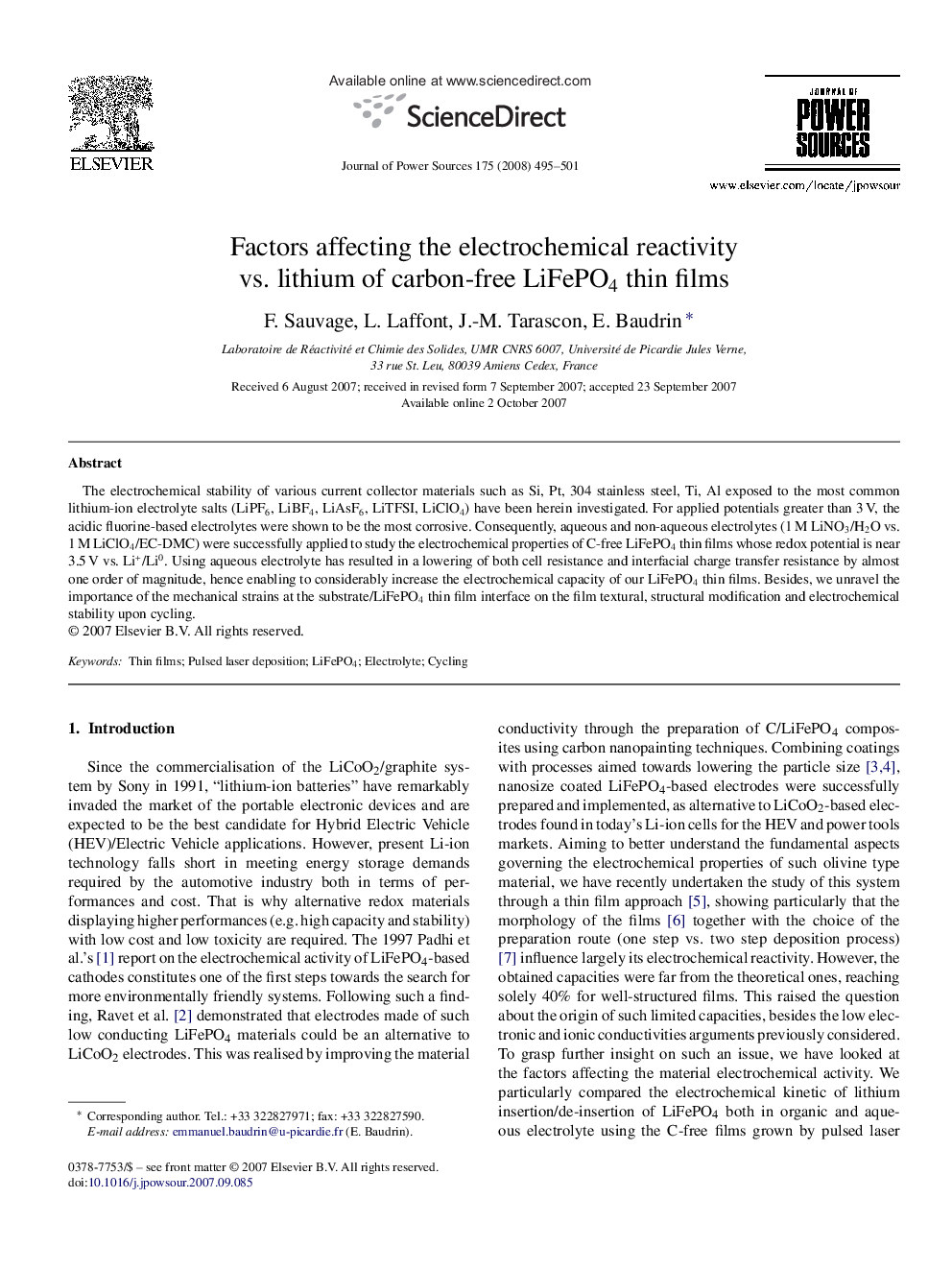| Article ID | Journal | Published Year | Pages | File Type |
|---|---|---|---|---|
| 1294808 | Journal of Power Sources | 2008 | 7 Pages |
The electrochemical stability of various current collector materials such as Si, Pt, 304 stainless steel, Ti, Al exposed to the most common lithium-ion electrolyte salts (LiPF6, LiBF4, LiAsF6, LiTFSI, LiClO4) have been herein investigated. For applied potentials greater than 3 V, the acidic fluorine-based electrolytes were shown to be the most corrosive. Consequently, aqueous and non-aqueous electrolytes (1 M LiNO3/H2O vs. 1 M LiClO4/EC-DMC) were successfully applied to study the electrochemical properties of C-free LiFePO4 thin films whose redox potential is near 3.5 V vs. Li+/Li0. Using aqueous electrolyte has resulted in a lowering of both cell resistance and interfacial charge transfer resistance by almost one order of magnitude, hence enabling to considerably increase the electrochemical capacity of our LiFePO4 thin films. Besides, we unravel the importance of the mechanical strains at the substrate/LiFePO4 thin film interface on the film textural, structural modification and electrochemical stability upon cycling.
